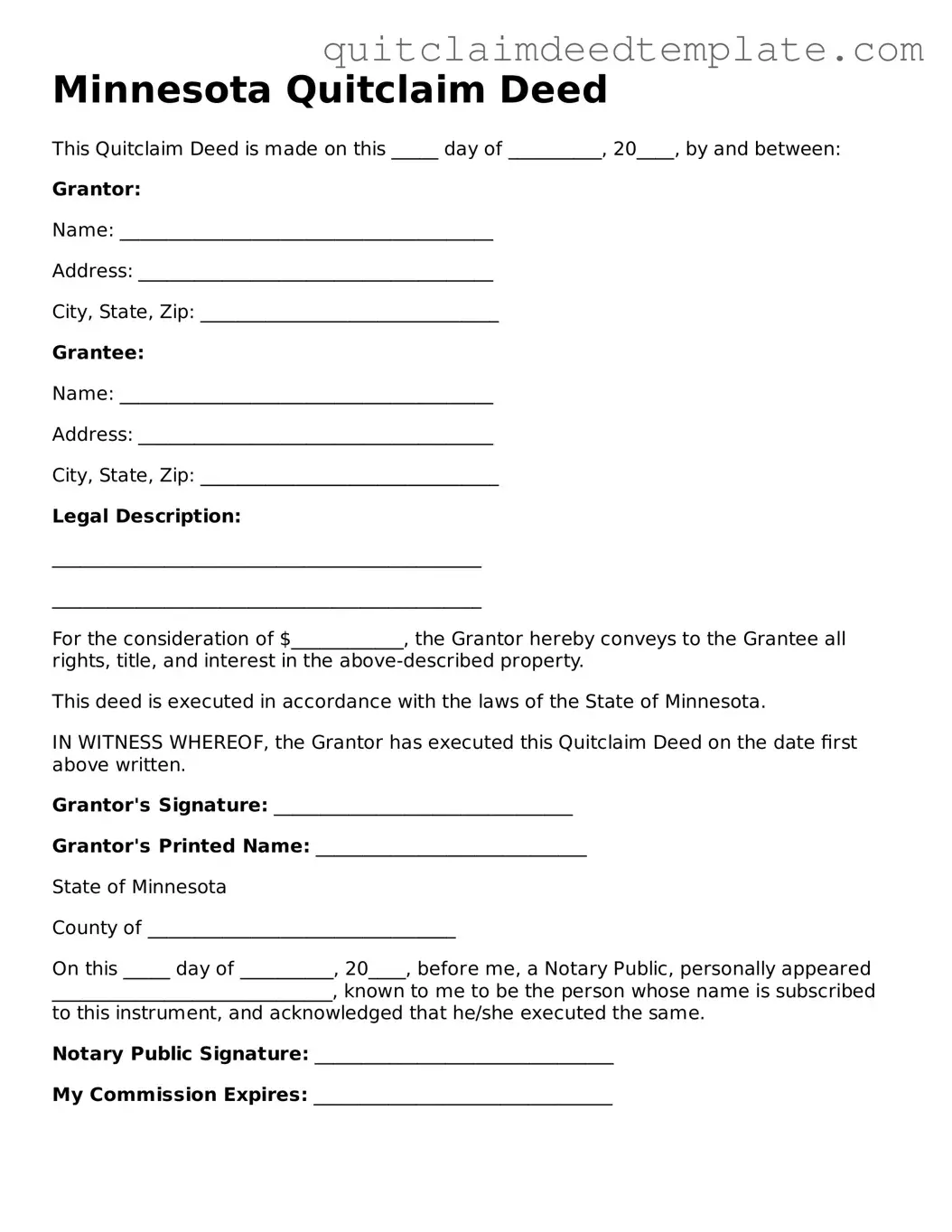Documents used along the form
When completing a property transfer in Minnesota using a Quitclaim Deed, several other forms and documents may be necessary to ensure the process is smooth and legally compliant. Each of these documents serves a specific purpose and can help clarify the details of the transaction.
- Warranty Deed: This document provides a guarantee that the seller holds clear title to the property and has the right to sell it. It offers more protection to the buyer compared to a quitclaim deed.
- Affidavit of Title: This sworn statement confirms the seller's ownership of the property and outlines any claims or liens against it. It can help reassure the buyer about the property's title status.
- Title Insurance Policy: This insurance protects the buyer against any future claims or issues related to the title of the property. It is often recommended when purchasing real estate.
- Property Transfer Tax Form: In Minnesota, this form is required for recording the transfer of property. It provides details about the transaction and ensures that any applicable taxes are paid.
- Notice of Homestead Classification: This document is necessary if the property will be classified as a homestead. It allows the owner to benefit from property tax reductions available for primary residences.
- Real Estate Purchase Agreement: This contract outlines the terms and conditions of the sale between the buyer and seller. It is essential for documenting the agreement before the deed is executed.
- Certificate of Real Estate Value: This form is often required to report the sale price of the property to the county. It helps local governments assess property values for tax purposes.
- Power of Attorney: If the seller cannot be present for the transaction, this document allows another person to act on their behalf, ensuring the deed can still be executed properly.
Understanding these additional forms and documents can significantly enhance the property transfer experience. Each plays a vital role in protecting the interests of both the buyer and seller, ensuring a clear and lawful transaction.
